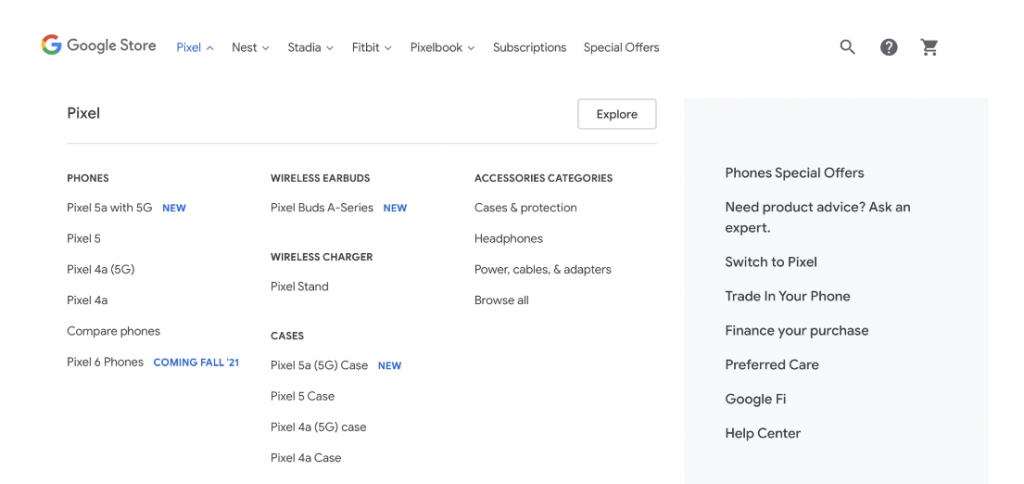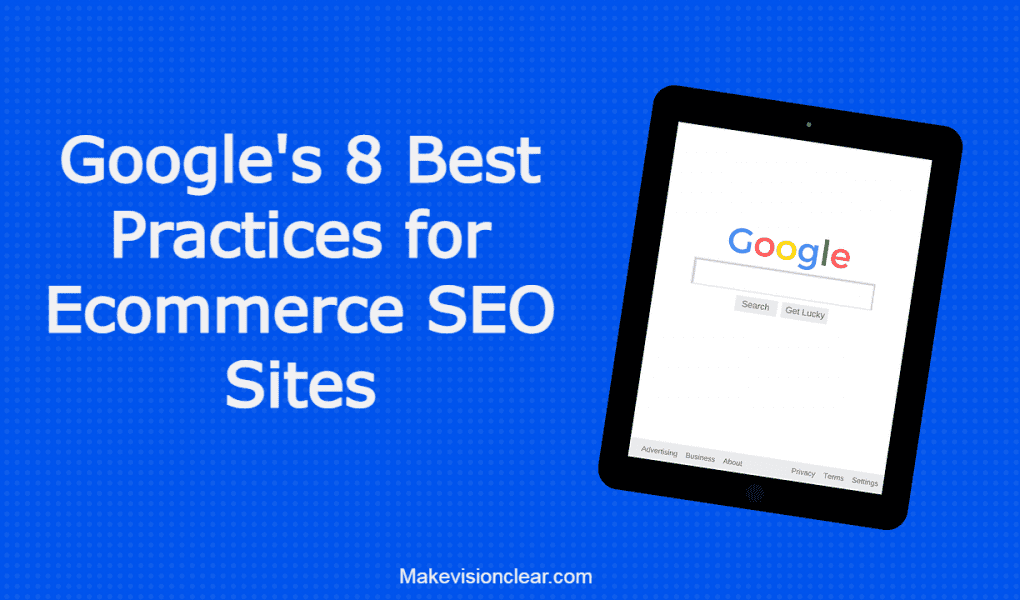Search engine optimization (SEO) is an important factor for any e-commerce business. It is the process of optimizing your website to rank higher in search engine result pages (SERPs). Google, the world’s leading search engine, has specific guidelines for ecommerce SEO.
In this comprehensive guide, you will learn Google’s 8 best practices for ecommerce SEO sites that will help you achieve your desired search engine rankings. You will learn how to optimize your website for both organic and paid traffic, as well as other essential tactics.
By following these best practices, you can drive more traffic to your ecommerce store, grow your customer base, and increase your sales. So, if you’re ready to take your e-commerce business to the next level, keep reading to learn Google’s 8 best practices for ecommerce SEO sites.
Table of Contents
What is Ecommerce SEO?
Ecommerce SEO is the process of optimizing your website for e-commerce to rank higher in search engine result pages (SERPs). Ecommerce SEO differs from standard SEO because it focuses more on items like product pages and product descriptions. Ecommerce SEO is important for increasing traffic to your site, growing your customer base, and increasing sales.
Ecommerce SEO can be broken down into two main categories: marketing and technical. Marketing focuses on bringing traffic to your site, while technical focuses on how to make that traffic stay. When customers make purchases online, they usually do so via Google. Marketing your e-commerce website properly can bring you more traffic, while making sure your site is optimized can keep those potential customers on your site, where they can make purchases.
See also: 21+ Digital Marketing Strategies to Boost Your Catering Business
Why is Ecommerce SEO important?
Without proper ecommerce SEO, your store may never be found by customers. People who are searching for products and services related to your industry are unlikely to find your site if it is not optimized. If you want to drive more traffic to your e-commerce store, you’ll need to optimize your site for search engine traffic. One of the most important goals of any e-commerce business is to generate more traffic. Read 2023 SEO trends to optimize your ecommerce site with the latest SEO strategy.
The more traffic a site gets, the more sales it can expect to make. But without ecommerce SEO, it can be challenging to bring enough targeted traffic to your site. Having a strong SEO strategy. can help you bring more targeted traffic to your site and increase your sales.
Ecommerce SEO can also help you rank higher in search engine result pages (SERPs). When people search for products, services, or information related to your industry, you want your site to appear in the top results. The higher your site appears on SERPs, the more people will click on it.
If you want to maximize your Ecommerce SEO to get a higher ranking and more sales for your company, Make Vision Clear can assist you to achieve your desirable goals with ecommerce SEO services.
Google’s 8 Best Practices for Ecommerce SEO Sites
1. Where ecommerce content can appear on Google
Google can display your ecommerce content on multiple surfaces, such as search results and Google Maps. Reaching new potential customers can be as simple as creating the right content and placing it on the appropriate Google surface.
For example, if you are selling a product that you want to appear in search results, make sure the content is relevant to the query. If you are going to feature your products in Google Maps, make sure that they have a high-quality photo and a good description.
Let’s take a look on Google surfaces:
- Google Search
You can learn more about how to improve your Google Search ranking by checking out the Search Engine Optimization (SEO) starter guide. Explore the list of structured data markups supported by Google Search to see examples of how Google can present your results.
- Google Images
Google Image best practices explain how to ensure that your images are indexed correctly by Google.
- Google Lens
If you want your products to be found in Google Lens search results, make sure your product details are uploaded to Google Merchant Center, opt in to product listings.
- Google Shopping Tab
Google Merchant Center is the place where you can upload your products so that they will appear in the Google Shopping tab.
- Business Profile
To provide your business details to Google, claim your Business Profile and Link Business Profiles and Merchant Center.
- Google Maps
If you want your products to appear in Google Maps search results, you need to upload your products with inventory location data to Google Merchant Center.
2. Share your product data with Google
If you want your ecommerce SEO to be successful, it’s important to share your product data with Google. This means including structured data in your site’s product pages. To increase eligibility for richer appearances and on more surfaces across Google that can bring more relevant traffic to your site, share your ecommerce product data with Google. To take advantage of these benefits, Google recommends that you do the following:
- Add product structured data to web pages
Structured data increases eligibility for Product rich results
- Upload data to Google Merchant Center
Setup google merchant account to display your product in google shopping centre.
3. Include structured data relevant to ecommerce
This is one of Google’s ecommerce SEO guidelines that will make it easier for Google’s algorithms to understand your site.
Adding structured data to your ecommerce site will help Google better understand your products, making them easier for Google to display in search results. This structured data can be in the form of a product schema, a price or review summary, or an image URL or description.
The product schema allows you to add product information to your website. It will allow you to describe your product and provide information that can be used by Google. The price or review summary will show the price of your product or a review of your product. When Google sees this, they will be able to show the price in their listings.
The image URL or description will tell Google where the images are located. This will make it easier for Google to display your products.
4. How to launch a new ecommerce website
When launching a new ecommerce site, you must do everything in your power to make Google notice you. You need to register your site on google and verify your ownership of it. Google share’s following tips to register your new site with Google:
- Index your site through Google search console. And if your site has less pages then you can use the URL inspection tool.
- If the site has large numbers of pages, develop a sitemap and update it through Google search console.
- Keep track of how Google Search indexes your site. It is possible for Google Merchant Center to verify and cross-check content with the Google Search index. Make sure that Google Search has indexed your site and that products can be purchased to avoid false verification warnings. The Index Coverage report provides an overview of indexing progress.
- If you also have a physical location, you should update your Google Business information.
- Register for Google Merchant Center to add additional information, such as product descriptions.
This can be also achieved through a combination of on-page SEO best practices, as well as outreach to relevant blogs.
In order to get Google’s attention, you must optimize your website for ecommerce SEO. This will increase your search engine traffic, which will in turn generate more sales. To start, you must choose a relevant name for your site.
You want your name to be short, sweet, and to the point. You also want to use your brand name if possible. After you’ve chosen a name, you must create a strong domain authority site. You can do this by creating high-quality content for your website.
Related Article: Google Confirms The Importance Of Backlinks Strength
5. Write high-quality product reviews
Product reviews are an important part of any ecommerce SEO strategy. However, many businesses fail to take advantage of this opportunity. Having product reviews on your site helps boost your SEO by providing more content for Google to crawl and index.
Product reviews also provide a social proof for your website and allow you to gather user-generated content. You should encourage your customers to leave product reviews and provide them with the necessary tools to do so. Make sure the reviews are original and don’t plagiarize.
If you find that your customers are leaving low-quality reviews, utilize review management tools to help remove them.
6. Designing a URL structure for ecommerce sites
URLs are an important part of SEO. The URL structure of your ecommerce site will determine where Google displays your content and how they rank it. With that in mind, it’s helpful to create a URL structure that makes sense and is easy for customers to understand.
It’s also helpful to create a URL structure that is easy for Google’s algorithms to crawl. One way to do this is by using a hierarchical URL structure.
A hierarchical URL structure places your primary product sections at the end of each URL. This allows Google to crawl your content easily. For example, let’s say you run an online clothing store. You can create a URL structure that includes the clothing type, clothing category, and item number.
For example, the URL for a black pair of men’s jeans could be: www.mybusiness.com/pants/black-pants/men-jeans/
7. Ecommerce site structure
Google has been able to grow exponentially and is now one of the largest search engines in the world. As a result, Google has become very picky about what it crawls and how it crawls. The Internet giant has strict guidelines on how sites are built, and this is especially true when it comes to ecommerce sites.
If you want your site to be crawled by Google, you need to make sure that your site’s navigation is friendly to the Google crawler. This means that the site’s navigation needs to be easy to understand and follow. For example add your product link from menu to category page, category pages to sub-category pages, and then sub-category to product pages.

8. Pagination, incremental page loading, and their impact on Google Search

If you want to improve the user experience on your site, you can display a subset of results (page performance is a ranking factor for Google), but you may need to ensure the Google crawler can access all the content on your site.
Some ecommerce businesses choose to host their products across multiple pages. While this can make it easier for customers to navigate your store, it can actually cause problems for your SEO.
Google’s ecommerce SEO guidelines suggest that you avoid hosting your products on multiple pages. Instead, host them on a single page with pagination. This allows Google to crawl your products more easily and index them faster.
Read more about Pagination best practices for Google
Conclusion
Are you looking to take your e-commerce website to the next level? If so, there is no better way to do it than to make sure you are following Google’s best practices for ecommerce SEO. This guide outlines the eight best practices for ecommerce SEO that Google has developed to ensure that your website is fully optimized for search engine results.
From understanding the basics of SEO to creating content that is optimized for search engine crawlers, this guide will walk you through the steps necessary to make your e-commerce website stand out from the competition. With the help of Google’s best practices for ecommerce SEO, your website will be well on its way to becoming a top-ranking web presence.



